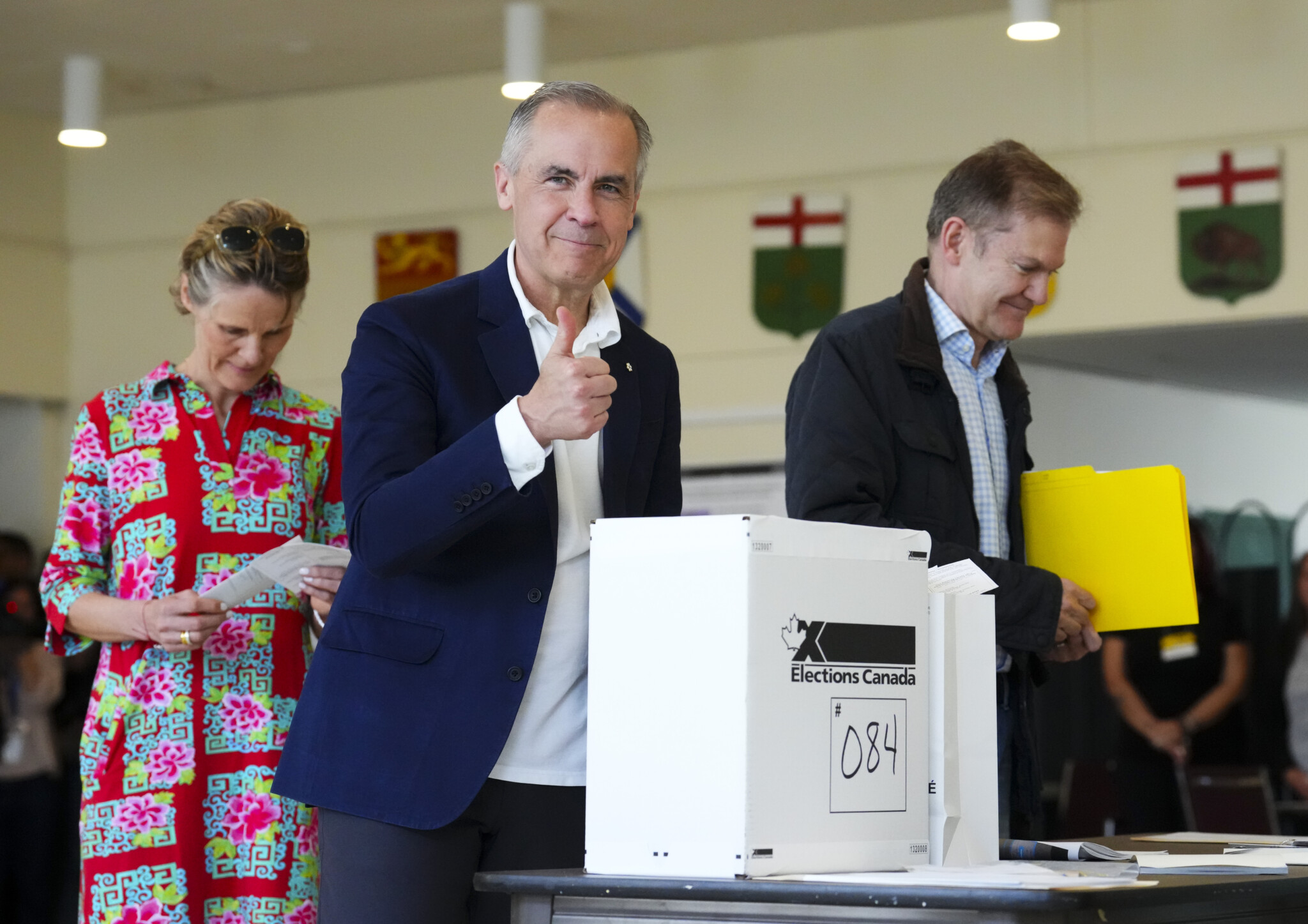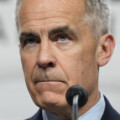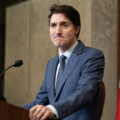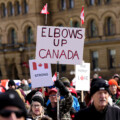Monday’s election concluded a 37-day campaign to form Canada’s new government, with Mark Carney’s Liberals securing a fourth-straight term and a third consecutive minority. Forecasters around the globe—and even our own Hub community—made predictions about the Canadian election.
How does it work?
Research has shown that a large, diverse “crowd” of people can make highly accurate forecasts about the future, including about politics. There are several ways to gather predictions: some platforms, like RANGE, ask users to provide percentage forecasts of future events and a rationale about why they think they’re right. This is the method the Hub community used when predicting the likelihood of Carney and Poilievre becoming the next prime minister.
Another common forecasting method is to use prediction markets, such as Polymarket and Kalshi. These are essentially betting markets, where users bet real money on the outcome of world events.
To see how forecasters performed, we’ll compare aggregate predictions from RANGE, Polymarket, and Kalshi. 338Canada’s election model, which uses polling data to make its own estimate of what the election result will be, will serve as a benchmark representing what “the polls” predicted.
Canada’s next prime minister
In the 10 days between the English-language leaders’ debate and the election, the Hub community forecasted Canada’s next prime minister, with their final forecast landing at a 68 percent chance of Mark Carney being the next prime minister.

Graphic credit: Janice Nelson.
While Polymarket and Kalshi forecasted a Carney win at even higher likelihoods, 338Canada’s implied probability of 85 percent for Carney scored better than all three platforms.
However, when we ask a more specific question, the forecasters performed better:
Canada’s next government
RANGE forecasters led the pack with a one-in-three chance of a Liberal minority, though all platforms agreed that a Liberal majority was most likely.
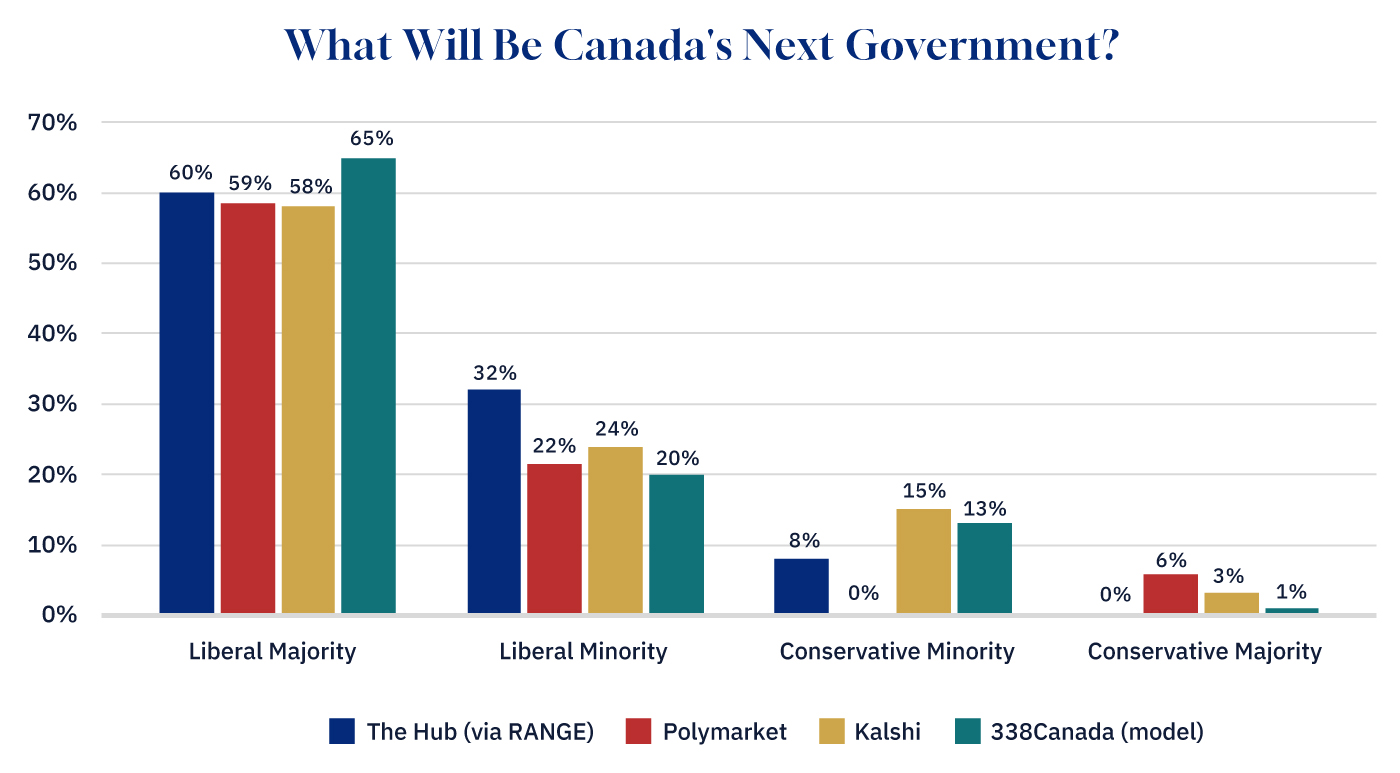
Graphic credit: Janice Nelson.
The fact that all three crowd-sourced predictions were lower on the chances of a Liberal majority than 338Canada’s model suggests that predictors were skeptical of the polls and likely made minor adjustments in favour of the Conservatives when making their forecasts. This ultimately proved to be the case, with the Conservatives beating their final poll numbers by about 2 percent.
Although the election is over, there are two prediction markets that are worth monitoring yet, both on Polymarket.
What’s next for the Conservatives?
At the Liberals’ polling peak in early April, bettors gave a 73 percent chance of the Conservatives swapping leaders this year. Since then, Poilievre’s Conservatives have lost the election, but held the Liberals to a minority while improving their own seat count. With Poilievre saying he’ll stay on as leader, and a seat opening up for him in Alberta, bettors have improved his odds considerably.

Graphic credit: Janice Nelson.
Nonetheless, predictors may still sense disquiet among the Conservative MPs and members—enough to give him a one-in-five chance of being gone by the end of the year.
Should it stay or should it go?
Among a sea of flashing lights on the prime minister’s crisis dashboard, the brightest and most prominent should likely be that of Albertan separation. Bettors give an astonishing 11 percent chance of Alberta voting for independence in 2025.

Graphic credit: Janice Nelson.
This market is new and hasn’t seen a lot of trading yet ($120,000 trading volume compared to $121 million trading volume on the next PM question), but it’s one to watch as Carney begins to navigate his new role.
